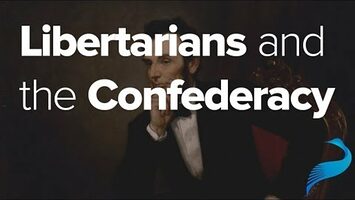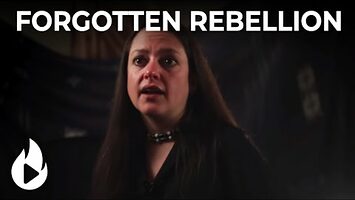Slavery in America
Encyclopedia
Servitude has taken many forms throughout history, but the essential quality of American slavery is the total ownership of one human being by another. The slave has virtually no enforceable property rights because they all reside with the slaveowner. Title to the slave’s body is so complete that the master can utilize it, sell it, or otherwise dispose of it in any way he chooses, just as he would with any other chattel, whether inanimate objects or animals. Moreover, the human chattel’s status arises involuntarily and can cease only at the will of the master. A free person, in contrast, owns himself.
Of course, governments have imposed all sorts of restrictions on nominally free laborers. Even those of us who enjoy the liberty attained in modern societies usually suffer some coercive attenuation of our self-ownership, as through income taxes and other legal restrictions. A free person also may voluntarily transfer rights through contract. However, the slaveholder’s power over human chattel was sometimes limited slightly within the antebellum South by unenforceable state laws preventing murder and mutilation and setting minimum standards for subsistence.
Therefore, we can visualize a spectrum running all the way from unqualified self-ownership at one end to absolute slavery at the other. This spectrum helps us to distinguish strict chattel slavery from other forms of unfree labor. Under serfdom, the lord’s property claim was not as complete. The serfs generally had some rights in land, some control over their time and labor, and some independent obligations to the prince or central state. Indentured servitude, apprenticeship, and contract labor, unlike slavery, were forms of bondage that were most often voluntarily assumed and always for a defined period; all of these institutions could likewise be found in the American colonies and the early republic. Military conscription and convict labor generally have fixed terms as well, and moreover the title holders to these forms of compulsory service are not usually private individuals or organizations, who can trade their claims with others, but instead government bureaucracies, with numerous legal regulations on the labor’s use and no obvious residual claim to its output. For this reason, we can likewise distinguish the forced labor of Nazi Germany and the Soviet Union from American chattel slavery, although the slave soldiers of the Ottoman Empire do occupy a more similar position because in that case the government was the Sultan, who presumably could exercise all the personal prerogatives of a private owner of human property.
Even in this restricted sense, chattel slavery has been a source of forced labor since the dawn of civilization. People have owned slaves on every continent and for every conceivable task. Although one of the most universal of all human institutions, slavery became a predominant mode of production in only five slave societies: classical Greece (excluding Sparta), classical Rome, the Caribbean, Brazil, and the American South. In the American case, black Africans were compelled to serve as farm laborers, servants, or concubines. Even when not directly satisfying their masters’ desires, many slaves in the medieval and ancient worlds engaged in household production only. New World slavery, in contrast, produced tobacco, sugar, rice, cotton, and other commodities for world markets.
Historically, slaves have been produced in three primary ways: debt default, capture, and breeding. Only the latter two, however, are significant to American slavery. Of all three sources for slaves, raising them may have been responsible for the greatest number overall, but has rarely proved sufficient to perpetuate the institution. Such slaves were almost always the offspring of slave parents, although there have been instances of nonslave parents so destitute that they sold their own children, as well as instances of raising orphans and foundlings for slavery. Breeding did not figure prominently in ancient or medieval slavery, and among New World economies, only in North America was the slave population reproducing itself by the mid-18th century. Virtually everywhere else, the persistence of human bondage depended on continued importation of captured slaves.
Servile rebellions faced severe free rider problems, and the only successful slave insurrection was in Haiti, ending in 1804. A more frequent and efficacious form of slave resistance was running away. As a result, slavery has never thrived unless some combination of geographical, political, or cultural barriers curtailed flight—barriers like the U.S. Constitution’s fugitive slave clause. The freeing of slaves by their owners, in contrast, has been common. These manumissions would often take the form of skilled slaves buying their own liberty in mutually beneficial transactions. Only in the British Caribbean and the southern United States did governments deprive masters of the right to free individual slaves, a policy that rendered American slavery significantly worse for the slaves.
Slavery always required an array of legal, political, and military safeguards, yet it endured well into the 19th century. Although no one enjoyed being a slave, only a few thinkers—primarily early classical liberals—had challenged the institution’s legitimacy or necessity before Quakers organized the world’s first antislavery society in Philadelphia in 1775. Western Europe had already experienced a receding of this most extreme form of bondage, and small-scale emancipations began in the northern United States. Then starting with British colonies in 1833 and finishing with Brazil in 1888, more than 6 million slaves achieved some kind of freedom in the Western Hemisphere. The international abolitionist movement—despite being a small minority in many countries—eliminated in a little over a century a labor system that had been ubiquitous for millennia. Today we live in a world where slavery may still persist clandestinely, but no ruler, no matter how vile or ruthless, would dare get up and publicly endorse owning another human being. Thus, the abolition of chattel slavery stands as the most impressive and enduring of all classical liberalism’s triumphs.
Further Readings
Davis, David Brion. Slavery and Human Progress. New York: Oxford University Press, 1984.
Hummel, Jeffrey Rogers. Emancipating Slaves, Enslaving Free Men: A History of the American Civil War. Chicago: Open Court, 1996.
Patterson, Orlando. Slavery and Social Death: A Comparative Study. Cambridge, MA: Harvard University Press, 1982.
Sowell, Thomas. “The Economics of Slavery.” Thomas Sowell, ed. Markets and Minorities. New York: Basic Books, 1981.












